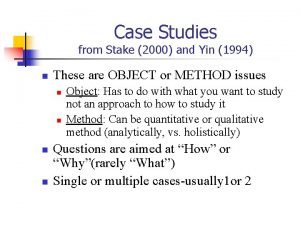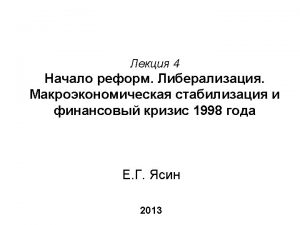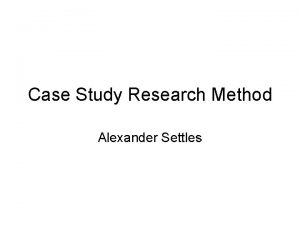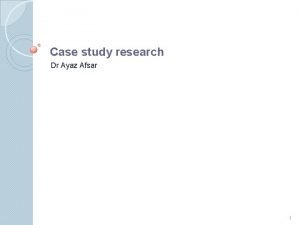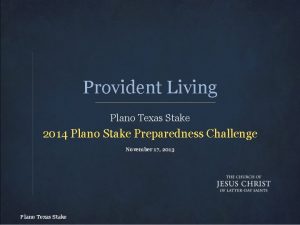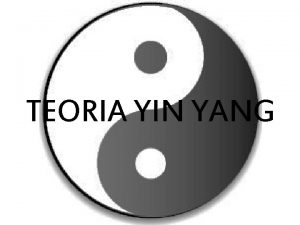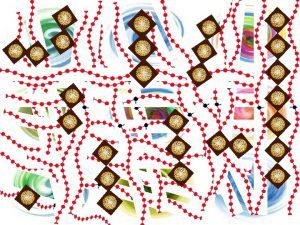Case Studies from Stake 2000 and Yin 1994






- Slides: 6

Case Studies from Stake (2000) and Yin (1994) n These are OBJECT or METHOD issues n n Object: Has to do with what you want to study not an approach to how to study it Method: Can be quantitative or qualitative method (analytically, vs. holistically) Questions are aimed at “How” or “Why”(rarely “What”) Single or multiple cases-usually 1 or 2

Case Studies-Advanced (Stake, 2000) n Intrinsic Study n n Instrumental Study n n Single case with in depth and complete understanding Single case, but exploring various factors of this case to relate them to theory or to a question-more a breadth issue Collective Study (Complex) n Examining several studies as either comparison or progressive support for theory or a premise

Case Studies-Examples (Stake, 2000) n Intrinsic Study n n n Instrumental Study n n n The Education of Henry Adams: An Autobiography The Swedish School System Campus Response to a Student Gunman” A Nonreader Becomes a Reader: A Case Study of Literacy Collective Study (Complex) n n Teachers’ Work The Dark Side of Organizations: Mistake, Misconduct and Disaster

Purpose of Case Studies n Seeks the unique features (particular) while also describing the common by describing: n n n n The nature of the case The case’s history and background The physical setting Other contexts (economics, political, legal, aesthetic issues) Other cases through which this case is recognized Through the informants by which the case is known Examine changes across time (multiple case) n Same group of different group

Case Study Rigor n Yin (1994) treats this as a positivistic activity, therefore: n n Construct, Internal, and external validity Reliability This is not just a pilot study for quasi- or full experimental designs. It is different. Stake (2000) treats it more naturalistic n n Thick description is key Auditability (can it be followed by the reader)

Case Study-Example n Handouts
